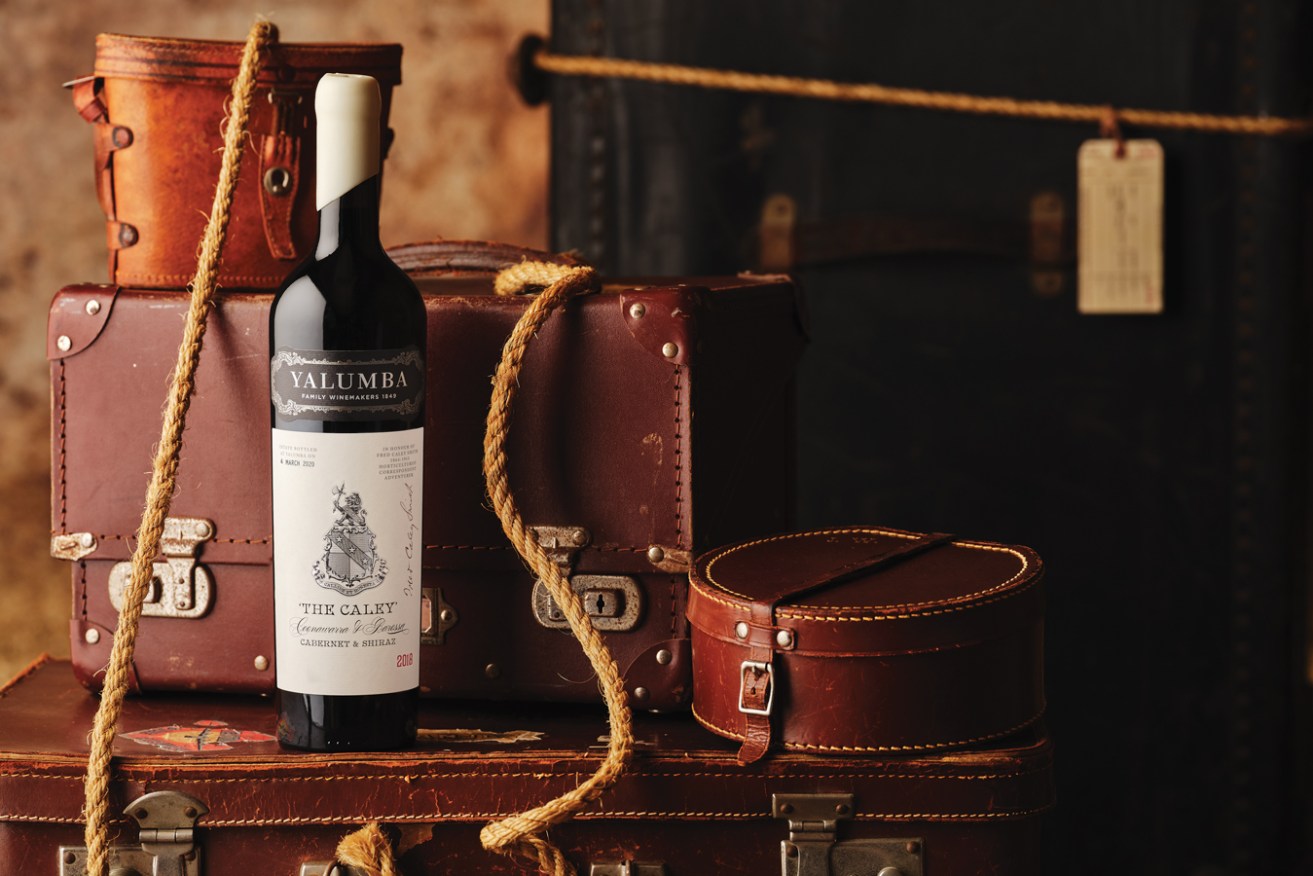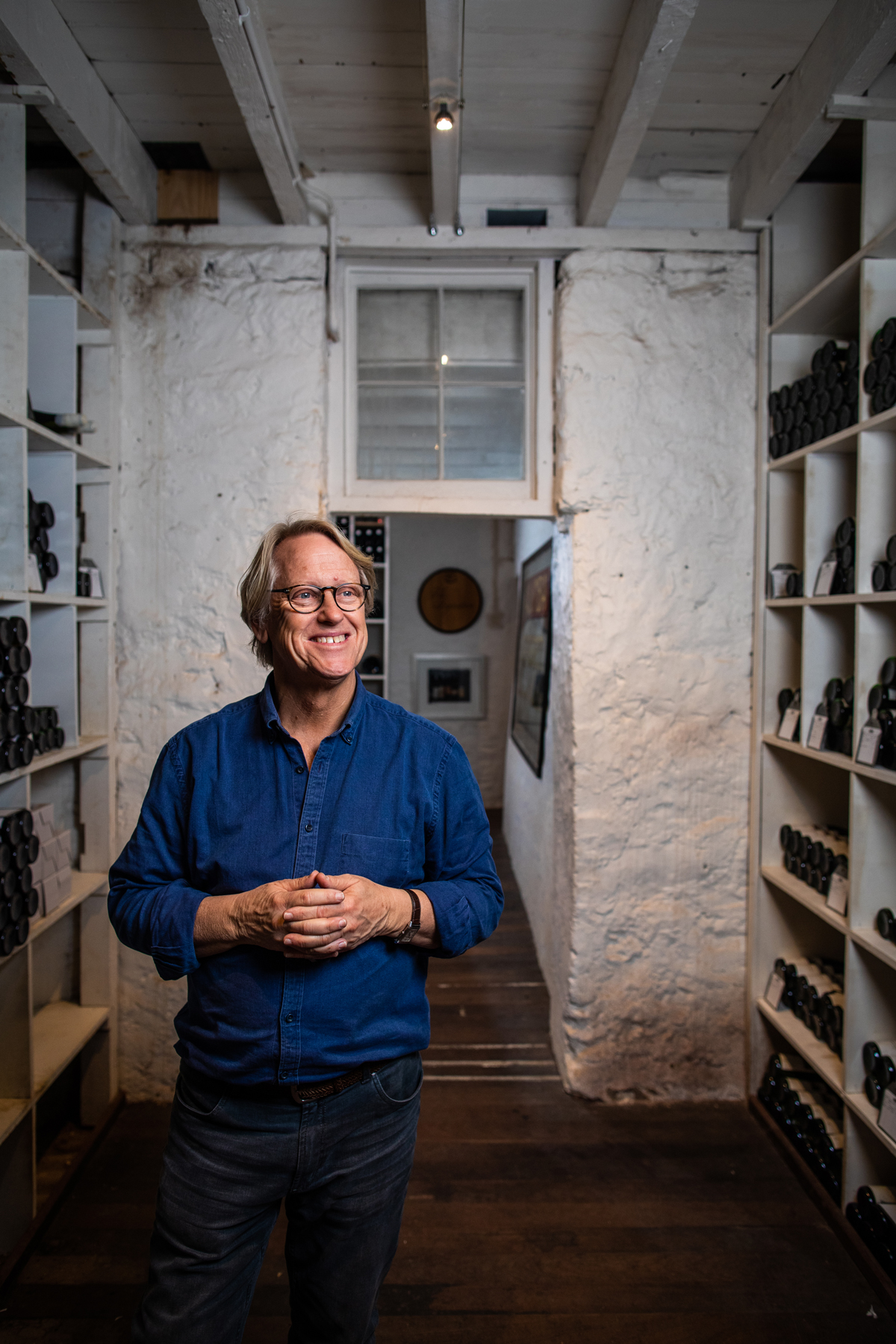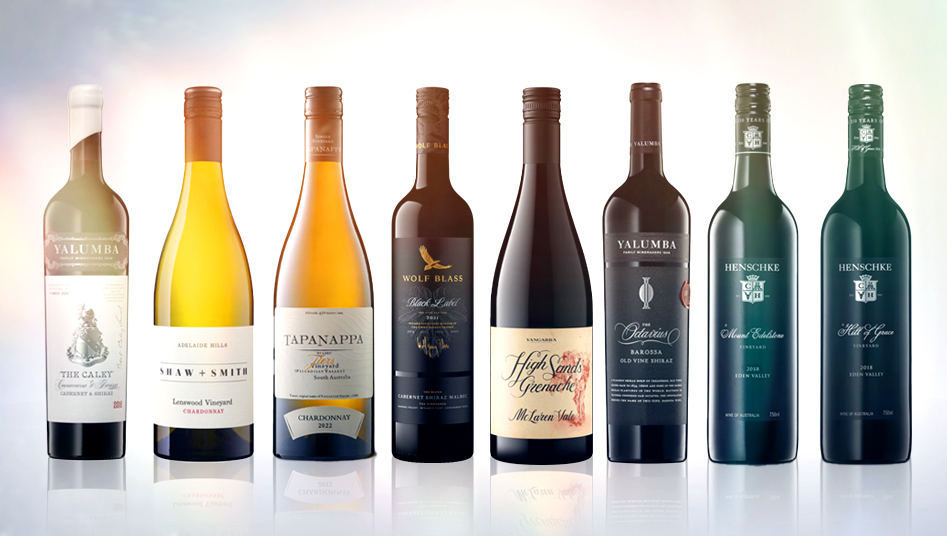Wine reviews: Our finest luxuries under the spotlight
After a spate of pointy-end launches, our writer asks what is gained from the rarefied world of top-shelf wines.


Yalumba’s most revered red wine, The Caley, is one of a number of Australian top-shelf wines turning heads overseas. Photo supplied
I’d like to begin with a self-conscious warning. What follows is all about the luxury end of the wine shop. The corner most people might dream about entering after they win the lottery – where the wine prices have at least a couple of noughts after them. The most famous of all South Australian wines, Penfolds Grange, has three of them.
Wine media and select retailers and trade partners get to taste these wines without having to check their lotto tickets. “That’s not a real job,” is the most common retort we are all used to in that bubble – and fair enough.
But every year we are brought into the world of fine wines to hear the latest vintage release stories and assess the wines, perhaps entering the scoring frenzy that often follows while marketing folks wait for the big points to be announced.
At a recent one of these rarefied tastings, the erudite proprietor of Yalumba, Robert Hill-Smith, remarked that Australia’s luxury wines can lift international consumers’ eyes in terms of what we are able to produce, and how we are perceived in the global marketplace. But…
“Top-end Australian wine deserves to be taken more seriously outside of Australia,” he said, speaking as he revealed the latest 2018 vintage of Yalumba’s most revered red wine, The Caley, a Coonawarra Cabernet and Barossa Shiraz blend in the grand tradition of finely styled Claret.

Robert Hill-Smith: ‘Top-end Australian wine deserves to be taken more seriously outside of Australia.’ Photo supplied
We are unable to elaborate immediately on this wine, as there is a media embargo until Monday, May 1. But we can report that the same wine took out the honours at a recent competition created by respected international wine writers Matthew Jukes and Tyson Stelzer. The judging, known as The Great Australian Red (GAR), celebrates the blend they believe is the all-conquering Australian. The Cabernet-Shiraz blend, they say, is Australia’s definitive wine style.
“It is a unique and age-worthy flagbearer to stand confidently alongside the benchmark red wines of Bordeaux, Burgundy, the Rhône, Piedmont, Tuscany and California,” they add confidently.
The 2023 GAR competition was, in fact, the fourth time Yalumba’s The Caley has won overall honours above scores of the finest other similar blends from around the country (it previously won in 2014, 2015 and 2015).
At its embargoed unveiling, Hill-Smith bemoaned the perception of Australian wine – that we are not seen as a member of the elite wine “club” in the world. We are more regarded, in general terms, for good wine done well. However, a wine like The Caley – and like Henschke’s Hill of Grace, and of course the regular Penfolds heroes, as well as a decent crate-load of other serious contenders – are now turning heads and convincing overseas pundits that we can play in the same league as the best of France and Italy.
“Hopefully it makes people there think differently, and positively, about what we do at the high end,” he said.
Hill-Smith has just been to France, where he was introducing another top-class Yalumba red, The Octavius Shiraz, to an elite distribution network known as La Place de Bordeaux, which in the past has sold the finest Bordeaux wines to 170 countries around the world. But it has started to take in New World producers, including, from SA, The Armagh Shiraz from Clare Valley’s Jim Barry Wines, Wynns Coonawarra Estate’s John Riddoch Shiraz, and now Yalumba.
Their place in the La Place de Bordeaux’s portfolio enables connections to the top wine lists and collectors globally, and makes a solid statement about fine Australian wine – the criteria for selection focusing on history and pedigree, according to one of the leading La Place negociants. One agent connected to the network recently announced that it demonstrates a “coming of age” for our wine reputation, and that we are more than simply a “sunshine in a bottle” commodity producer.
This is borne out by the latest international research compiled by lead industry marketing body Wine Australia in concert with global beverage analysts IWSR and Wine Intelligence. In 2022, many markets saw an increase in consumers’ perception of the quality of Australian wine. The most favourable change in the past year came from Quebec and Singapore, followed by Japan. Looking at the long-term trend, wine consumers in South Korea, Hong Kong, Singapore and Japan have significantly increased their perception of Australian wine’s quality between 2017 and 2022.
In the US, those who drink Australian wine who associate us with expensive and fine wines has risen from 38 per cent in 2010 to 53 per cent last year.
In the UK, while total sales of Australian wine rose only 1 per cent in 2021, what is determined as “premium” wine selling for around 10 pounds ($A20 approx) and above has grown 12 per cent. But those associating Australia with the expensive/fine wine category has barely improved over the past 12 years, from just 40 per cent to 44 per cent.
The analysts commented that there is a luxury halo effect in many industry sectors, the best example being in the car world where luxury cars help drive overall brand perception. However, it’s important to note, the analysts report that most of the literature around such studies suggests that the halo has a greater impact for the brands themselves rather than the wider category. A salutary lesson for our peak wine industry marketing bodies.
Co-creator of The Great Australian Red, Matthew Jukes, based in England, has been an enthusiastic ambassador for Australian wine in the UK, compiling an annual 100 Best report and embarking on a 16-point roadshow tour to showcase those included. While Australia is already what he calls a “hero country” in the UK wine scene, he’s convinced Australia’s reputation is improving out of sight.
“There is no doubt that elite Australian wines are finally entering the informed collectors’ psyche and cellar,” he says.
The price range of his roadshow wines sits between 15 and 160 pounds ($28-$300).
“This is what turns them on,” he adds. “They don’t want to look for an alternative to a Chilean, Argentinean or South African cheapie. They want to look for French, Spanish, Italian alternatives – Friday, Saturday and Sunday wine, not mid-week dross.”
In his 100 Best report for 2022-2023, the list of high-end SA wines sends exactly that message in many bottles. Wynns John Riddoch is there. So, too, Jim Barry’s Armagh and the previous 2016 vintage of The Caley. Add in St Hallett Old Block Shiraz, Ox Hardy’s Ancestor Vines Shiraz, Kaesler’s Old Bastard Shiraz, and many, many more, including a solid mob from the Torbreck portfolio – The Laird, Run Rig, The Factor, The Descendant at the top price and quality points (Jukes named the Barossa producer his Australian winery of the year for its “roll call of greats”).
if your winery hasn’t got some wines in the luxury end then people don’t see you as a serious player
While Shiraz and Cabernet are the leaders, and always will be, in his view our “epic” Chardonnays from the Adelaide Hills, as well as several “small but beautiful” producer-driven Pinot Noirs, are also gaining traction, perhaps more so than our high-end Grenache.
We should also take note, he says, that it’s time to capitalise on the opportunity that lies ahead for our best wines in the UK. While most Old World wine centres don’t feel it’s necessary to tour there face to face, it’s time for Australia to shine.
“Aussies are famous for engagement and interaction, and this is such an important part of the story. Only then will these wines get ordered and then, most importantly, ordered again,” he says.
Wolf Blass chief winemaker Chris Hatcher agrees that Australia’s winemakers need to get out on the road again and tell our stories. When he showcases the Wolf Blass Luxury collection overseas, including Hills Chardonnay, regional Shiraz and Cabernet Shiraz blends, as well as multiple Jimmy Watson Trophy winner the Black Label Cabernet Shiraz Malbec blend, the wines are considered equal to many of the global superstars.
“People see the iconic wines of Europe still as benchmarks but there’s no doubt if you do blind tastings – our wines against other wines from around the world – they do very well,” Hatcher says.
“But we’re talking luxury goods and when you’re selling luxury, no matter what it is, it’s not just about quality. It’s also the story, the history and all the other factors that drive someone to buy something.
“It is the luxury goods business at that end, and people pay for what they see is the brand equity.”
Hatcher is convinced that whether it’s wine, fashionable cars or any other industry, you need your icons to “bring a bit of sizzle”, and to show a level of quality that we can make. The same principles surround our more affordable wines.
“It’s sort of that spin-down effect of your luxury into your more affordable classes, and I think from a global perspective, if your winery hasn’t got some wines in the luxury end then people don’t see you as a serious player,” Hatcher says.
The work done by Wine Australia at the luxury end has been strong, he adds. And so is the storytelling around our diversity. We just need to get out on the road and continue to tell those stories, and showcase that we can sit among the best in the world.
TASTING NOTES

The Caley 2018
Coonawarra/Barossa / 14% / $365
The sixth in line of Yalumba’s premier “Claret” blend of Coonawarra Cabernet Sauvignon (80%) and Barossa Shiraz (20%), the latter sourced from two blocks, one planted in 1901 in the Light Pass district and the other now 50-plus years old on the southern slope of the Yalumba Eden Valley estate. The marriage of both varieties here is joyous, Cabernet aromatics offering all manner of varietal thrills, blackcurrant and subtle leaf, verging on floral, then entwining with richer Shiraz to bring extra depth in the palate. Twenty months in 38% new French oak brings savoury layering without the timber showing, allowing an elegant and well-mannered power in the glass to emphasise the wine’s statement as a truly fine expression of this great Australian style.
Shaw+Smith Lenswood Vineyard Chardonnay 2021
Adelaide Hills / 13% / $95
From their prized high-Hills vineyard, a chardonnay in the most svelte styling, crisp and clear in its pristine approach. Firstly, let this come towards room temperature rather than drink straight from the fridge, as its white stonefruit notes appreciate the opportunity to meet on better terms with its more citrussy feels and nougat-like melt-in-mouth creaminess. There’s a subtle sense of petrichor as well, and a lovely minerally tapering to finish. All class.
Tapanappa Tiers Vineyard Chardonnay 2022
Piccadilly Valley/Adelaide Hills / 13.8% / $110
From Brian Croser’s pioneer Piccadilly Valley vineyard, this is an all-enveloping Chardonnay experience, captivatingly ripe in its aromatic and flavour profile, white peach/nectarine with grapefruit inserts, a sense of creaminess, vanilla shortbreads and a faint spicy oak backdrop, which comes across as a rich palate feel though cut neatly with a delicate citrus acidity in the finish, encouraging multiple revisits to the glass. Delicious and distinctive.
Wolf Blass Black Label Cabernet Shiraz Malbec 2021
Multi SA regions / 14.5% / $130
This year marks the 50th anniversary of the first Black Label; half a century of a blending philosophy that here stretches across the three regions of Barossa Valley, McLaren Vale and Langhorne Creek. Its varietal makeup in this vintage is 52% Cabernet Sauvignon, 42% Shiraz and 6% Malbec, the last perhaps contributing to a vibrant dark purple colour and engulfing aromas. From there it’s all black cherry and satsuma plum, richly drawn to the dark side of the flavour wheel. Spicy oak adds to the wine’s interior power and layering, cabernet leafiness and familiar grip noteworthy in the finish. Big time.
Yangarra High Sands Grenache 2020
McLaren Vale / 14.5% / $300 (Available May 2023)
The Vale’s icon Grenache sourced from 1946-planted bush vines in the northern corner of the region. It’s encyclopedic in a total expression, all its elements in pure focus. Garnet hued, fragrant with cherry liqueur suggestions, flavours similar with exotic spice feels and a fine minerally dusting to texture the palate. When all these notes harmonise in the finish, you know you’re in a very special moment. The echo is as clear as the initial voices. Complex, complete and totally convincing.
Yalumba The Octavius 2017
Barossa Valley/Eden Valley / 14.5% / $150
A pinnacle wine from Yalumba, crafted expertly by head red winemaker Kevin Glastonbury in an evolving style that has eased the wine in the past few years from a muscly character to a more elegant approach for old-vine Barossa Shiraz. Its average vine age is 80 years, the oldest plantings dating back to 1854. The name derives from Yalumba’s own cooperage-made barrels, where the wine has matured for close to two years, including a proportion in seasoned American oak octaves (100 litres). They play a part in the final expression of this grand wine, a 67:33 percentage mix of Barossa Valley and Eden Valley fruit to give it a resonance and complete regional provenance. The complex dark-berried nature of the palate, its peppery spice with floral top notes, and evenness of structure are what really impress. It’s a beauty, with all the expected power of the style, encouragingly satisfying drinkable now, and certainly for many more years. (Its luxury sibling, The Caley Cabernet Shiraz 2018, will be available in June.)
Henschke Mount Edelstone 2018
Eden Valley / 14.5% / $245
The first of Henschke’s single-vineyard Shiraz iterations, made originally in 1952, the family proud that it is arguably the longest-serving single-vineyard wine in Australia, from a vineyard planted in 1912, now managed organically and biodynamically. It screams Eden Valley through and through, dark and pure, ripe blackberry with sage notes, the palate leaping with fruit and spice elements from a combination of new and seasoned oak, French and American, lingering with a subtle grippy hold, fine berry skin tannins in play. Finesse with power, a complete and joyous vineyard expression.
Henschke Hill of Grace 2018
Eden Valley / 14.5% / $950
In the year this wine ripened and was crafted to ultimate desirability, the Henschke family celebrated its 150th anniversary of winemaking in the region. The original “grandfather” vines on this famed block were planted in 1860, with replenished vines from the same stock now ranging from more than 100 years, 70 years and 35 years. The first Hill of Grace single-vineyard Shiraz was made in 1958. It’s now the most renowned of all our family-owned wines and this vintage carries on the narrative with aplomb, its dark plum and spice core with subtle stock and umami notes offsetting the fruit in the flavour settings. It has a gentle palate feel, culminating in a light chewiness, concentration and structure in fine balance, still tightly packed and promising to unfold over many years. A truly great experience.




